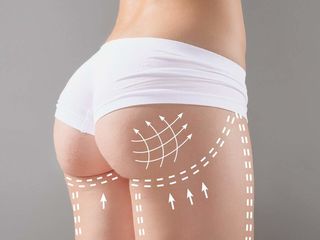Beauty
Dying for the Perfect Butt
Why is there a rising demand for the deadliest cosmetic procedure?
Posted October 19, 2018
This month, we have heard media reports that a second British woman had died following 'Brazilian butt lift' surgery.
The desire for a bigger butt is growing and the number of globally reported butt implants rose between 2000 and 2015 by over 250% (Perfect Me, p.85). While data on cosmetic surgery is notoriously slippery, there is no doubt that there is a rise in such operations.
Buttock implants are a way to attain the emerging and dominant global ideal of ‘thin with curves’. An ideal which is far more demanding than previous beauty ideals. It is not Western, but global. For example, big lips – traditionally associated with black women – are increasingly required to make the grade. As beauty ideals converge it is the global mean which is the ideal. Coffee-colored skin (tanned white skin, lightened black skin), large eyes and lips, thin waist, and curves in the right places. No one is good enough without help.

Implants on a thin frame are one way we can get these perfect curves. Few of us can manage pert breasts on an otherwise thin frame – especially after we’ve breastfed or as we age. And butt curves are even harder. Working out will help, but 200 squats a day won’t give you the Kardashian rounded buttock. As non-surgical procedures and cosmetic surgery normalize and become regarded as routine, it is to the knife – and needle – we increasingly turn to meet the ideal. The pressures to measure up, and the feelings of failure which we attach if we don’t, are high and much higher than they were. But while it might be the case that reaching for the needle or knife feels like an obvious solution, all beauty practices and all surgeries are not the same.
Buttock implants, as the British Association of Aesthetic Plastic Surgeons (BAAPS) warn us, are by far the most dangerous cosmetic procedures. There are good reasons for this. Breast implants are surgically routine, heal well as the wound is not under pressure and supported by a bra, and they have relatively few complications. Buttock implants are not routine, the wound is constantly moving, weight-bearing and under pressure, and the risks of complication are high. It is also far more difficult to keep the wound of a buttock implant clean and infection free. (For a full and slightly gruesome account of exactly why see a cosmetic surgeon’s description on p.102-103 of Perfect Me.)
Breast implants and buttock implants are not similar when it comes to risk. Nor are lots of other beauty practices. Some practices which we think of as routine are highly risky – like tanning and skin-lightening – and the assumption that all surgery is equally risky is just wrong. But there is a quick way to distinguish between practices. What is routine and normal – I argue in Perfect Me – is just what you do, your friends do or you would like to do. If we are to stop more deaths of the type we have seen this week, we need to be much more aware of the differences between beauty practices and the risks attached.
But we should not victim-blame. In a visual and virtual culture, with a global beauty ideal emerging, the pressures to be perfect are overwhelming. In this context, it is wrong to blame women for what they do or what they don’t do when it comes to beauty. Telling young girls (or women) simply to resist is to ask too much. And to tell them ‘it’s what’s on the inside that counts’ is just a lie. We need to collectively take responsibility for the environment we’ve created. Body-image anxiety, cosmetic surgery complications and botched fillers are all harms which come from an over-dominant ideal. We shouldn’t leave individuals to struggle alone but see this as a public health issue. The context needs to change so there is less pressure to be perfect.
References
Widdows, H. (2018) Perfect Me: Beauty as an Ethical Ideal. Princeton University Press: Princeton.


